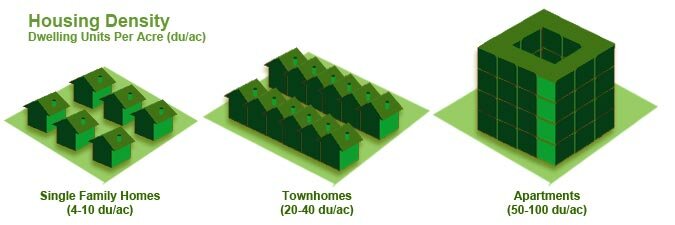What is density, and how does it affect development and the people who make choices about where to build, and where to live? Some believe increased density isn’t good, but when it is provided with appropriate design, increased density can deliver substantial benefits for communities. Let’s examine density to understand it better.
Housing density or residential density refers to the number of homes per unit of land. It is typically reported in dwelling units per acre (or du/ac). For example, the average density in the Atlanta Metro area is 1.3 dwelling units per acre. The following graphic illustrates other density levels.

Large residential lots are among the region’s most attractive features to many people, and much of our future growth will be in suburban single-family homes, but we must ensure that it is one choice among many. Here’s why: the costs of serving low density growth are high and growing, and our air, water and financial resources – and our infrastructure – cannot handle it. Increasingly, our aging population and young singles need and want walkable access to shops, jobs and recreation.
There are many good examples of well designed medium and high density homes and apartment buildings. The images below illustrate some of the different levels of housing density, and how density can be successfully integrated into communities.
Townhomes, Cluster Homes, Row Houses (20-40 du/ac)
Stack plans, Walkup, courtyard, mid-rise, high-rise apartments and condos (40-100 du/ac)
High-rise apartments and condos (100-300 du/ac)
Density Transportation Housing Greenfields Environment